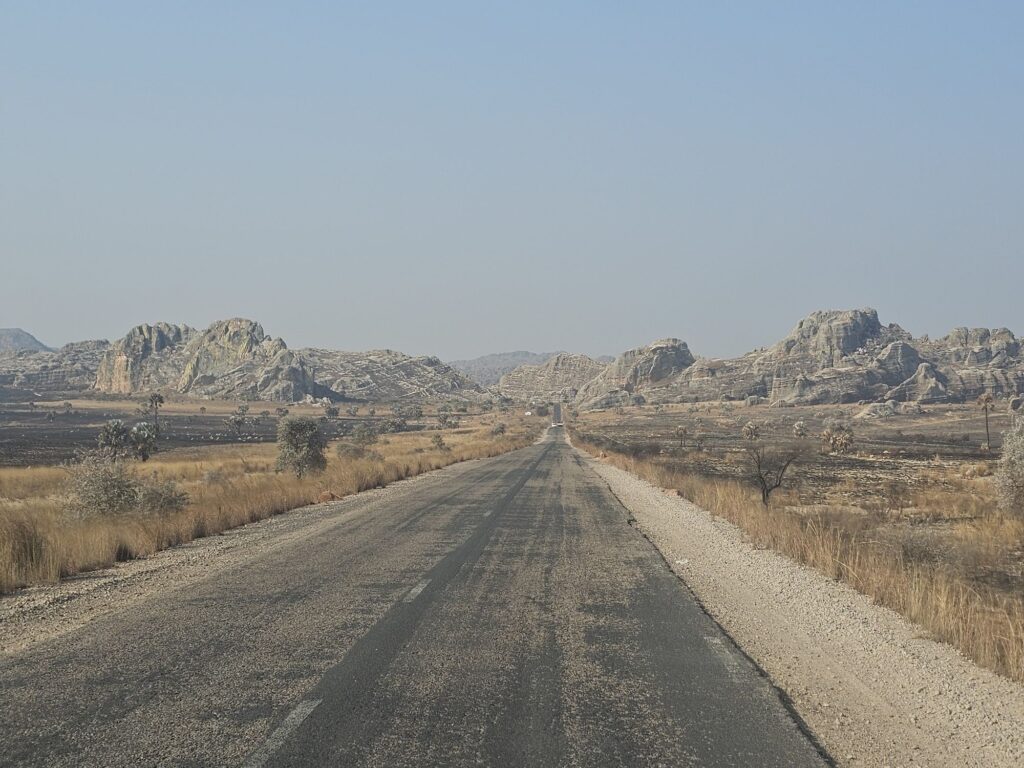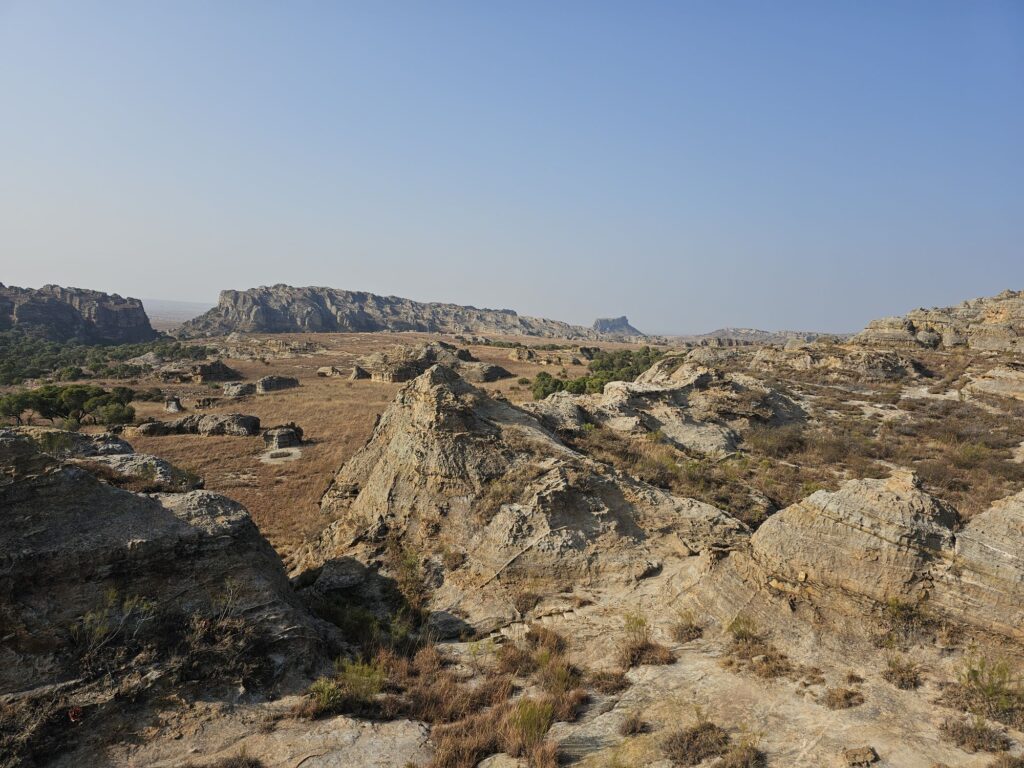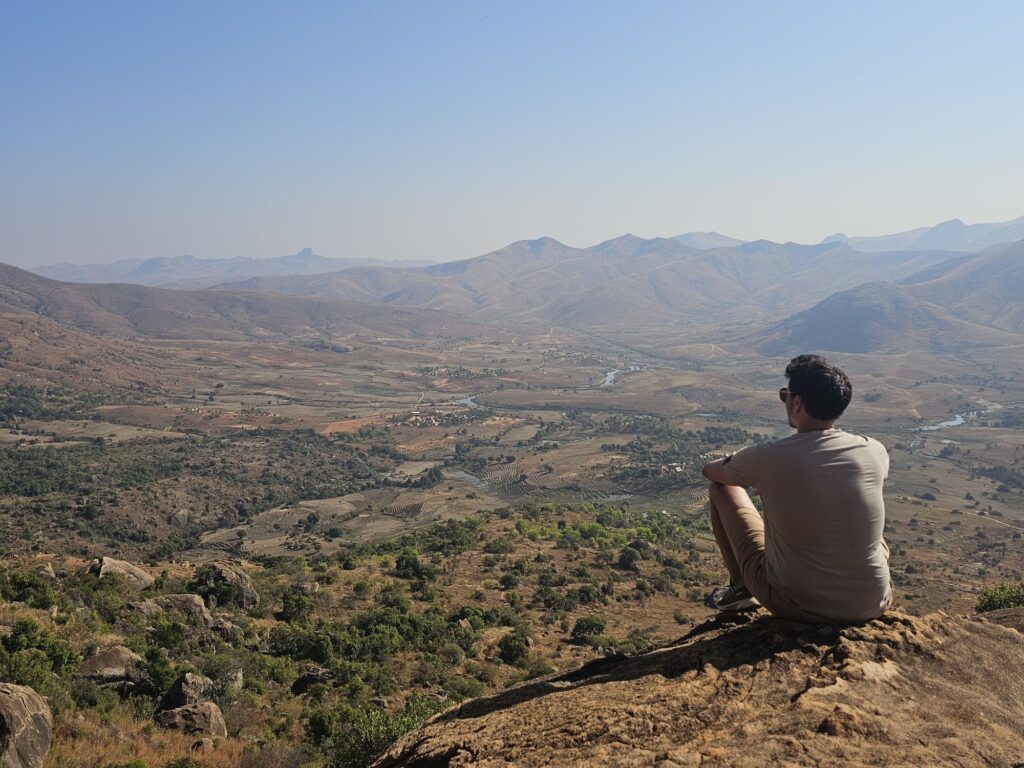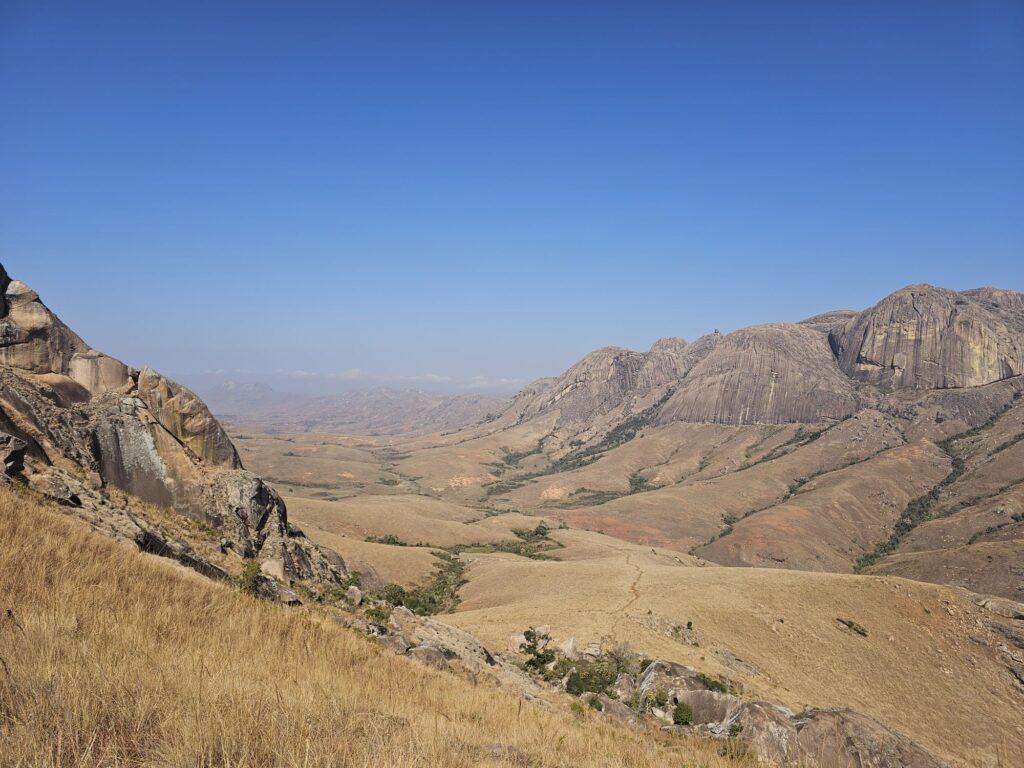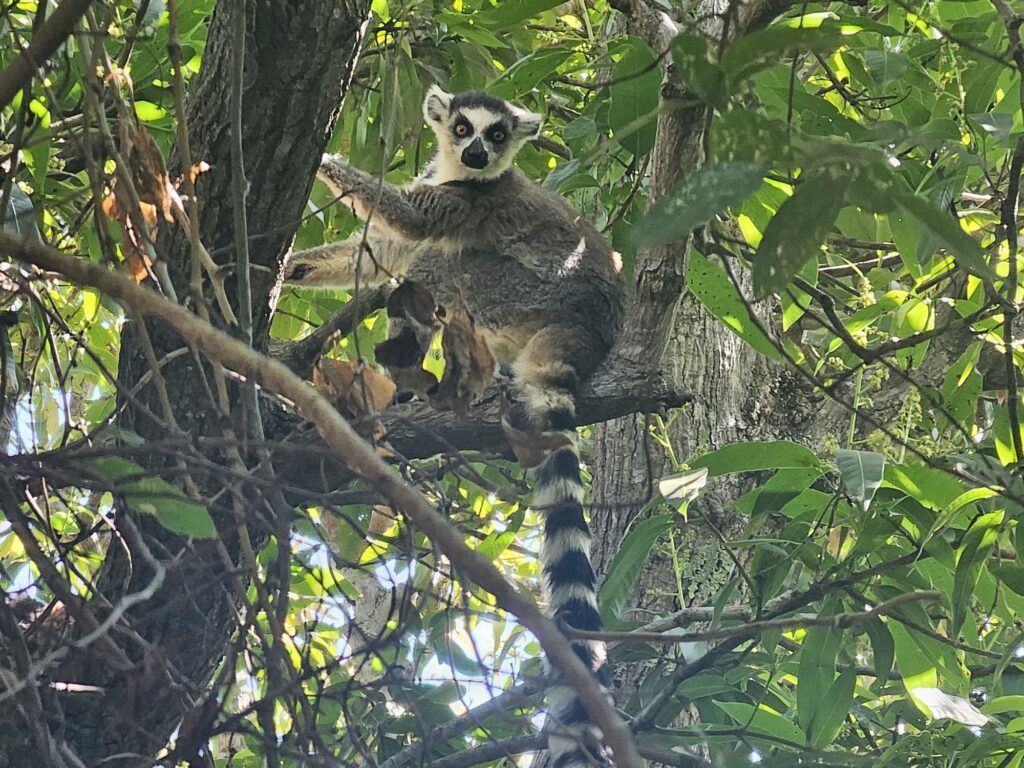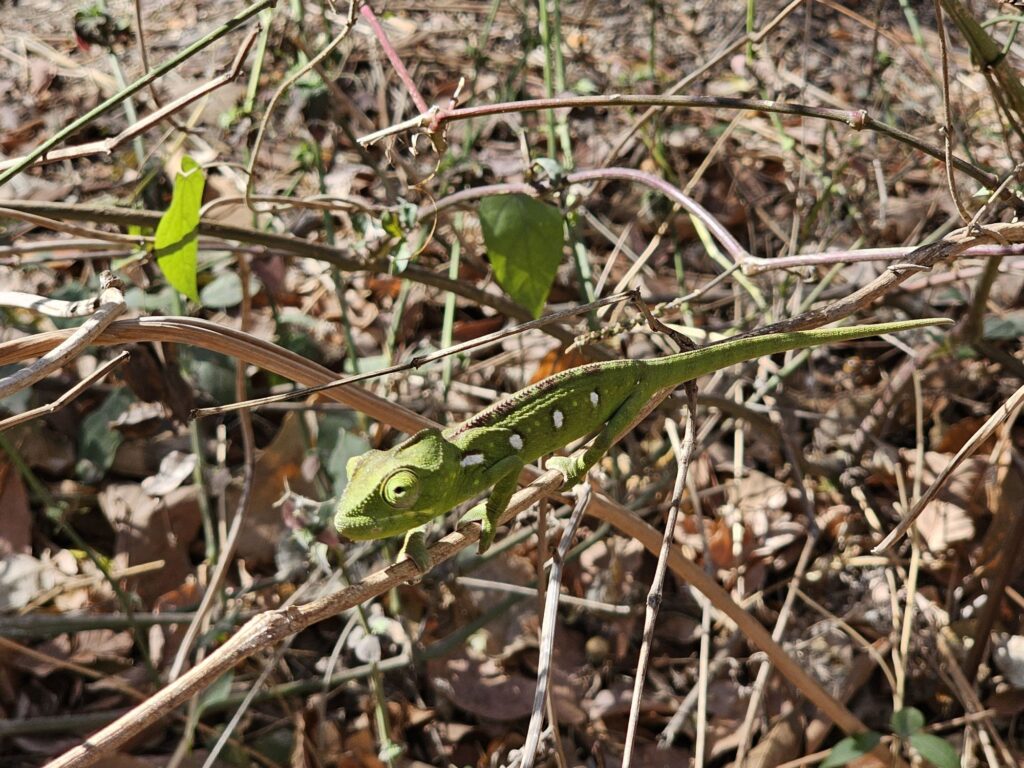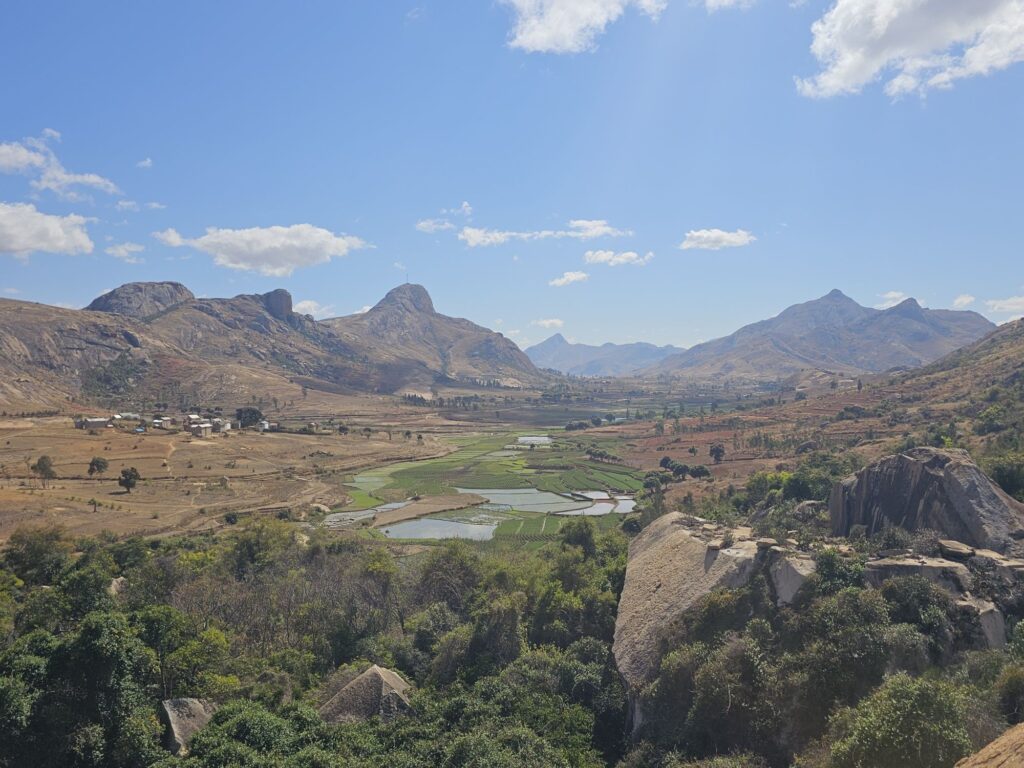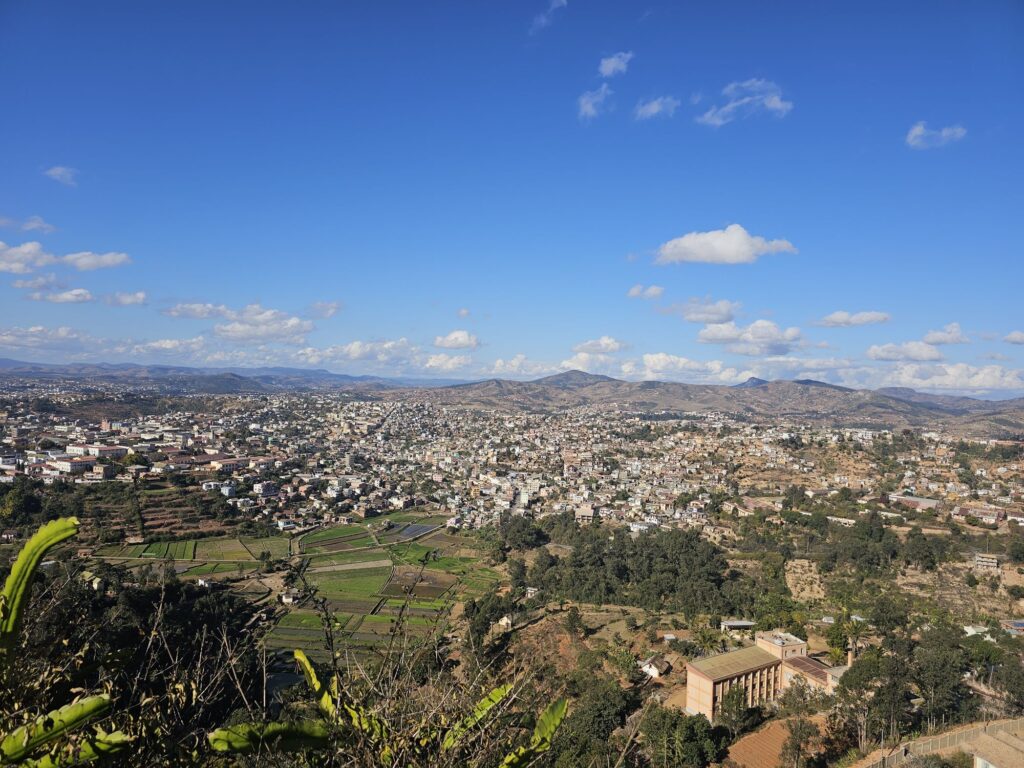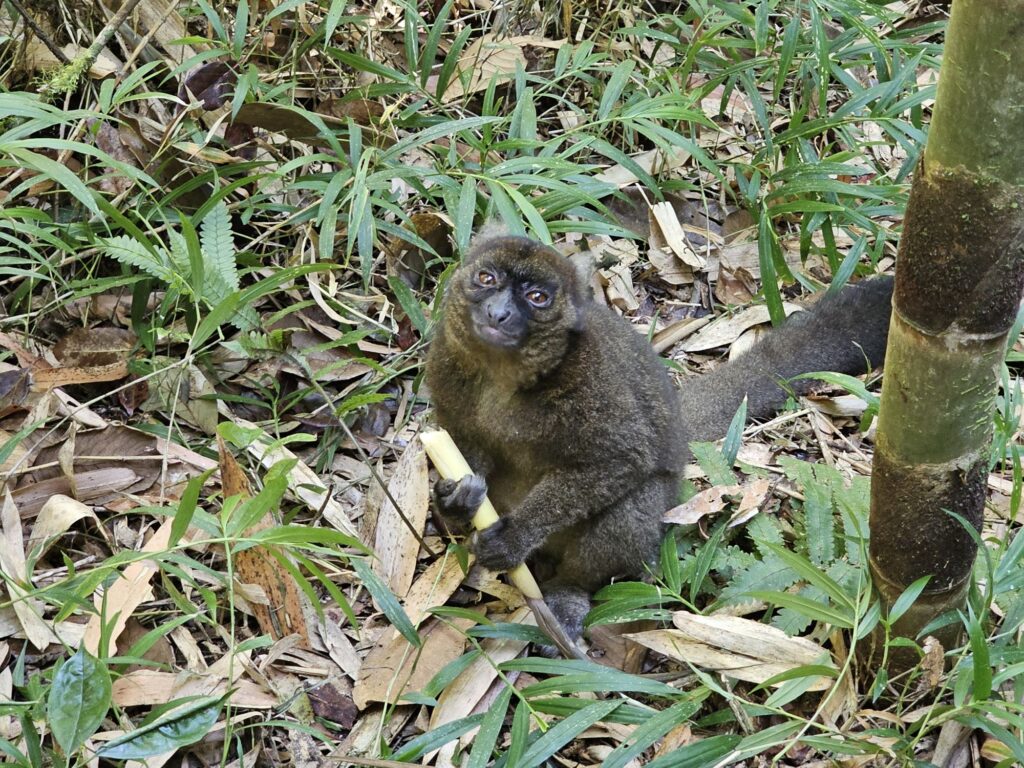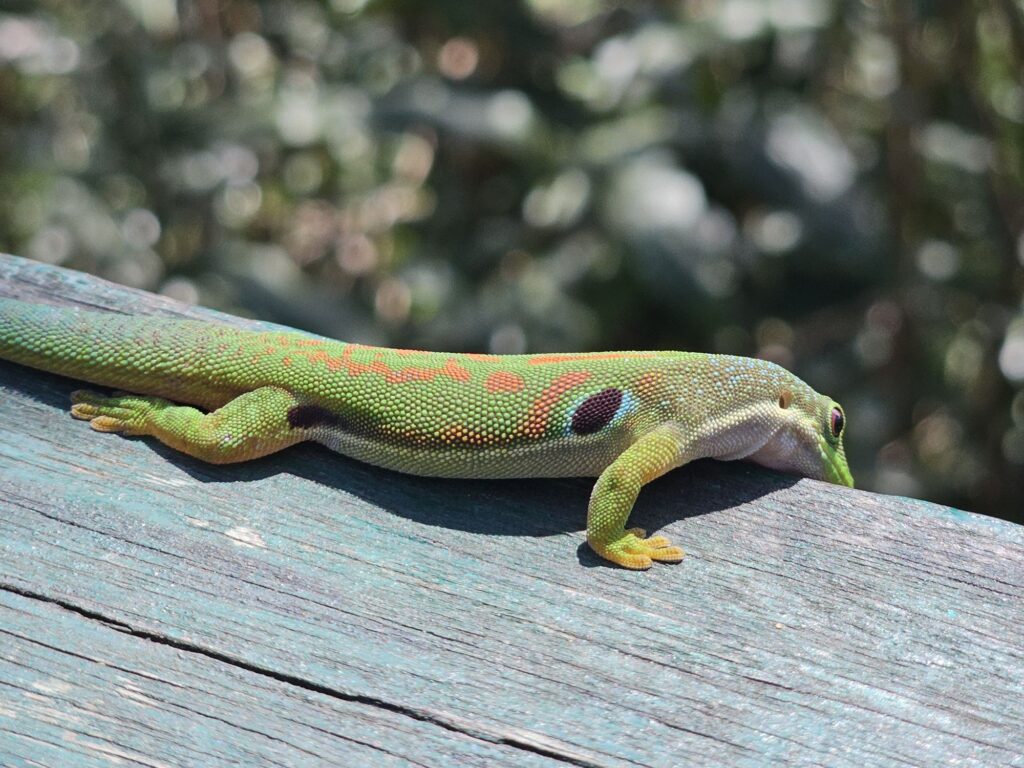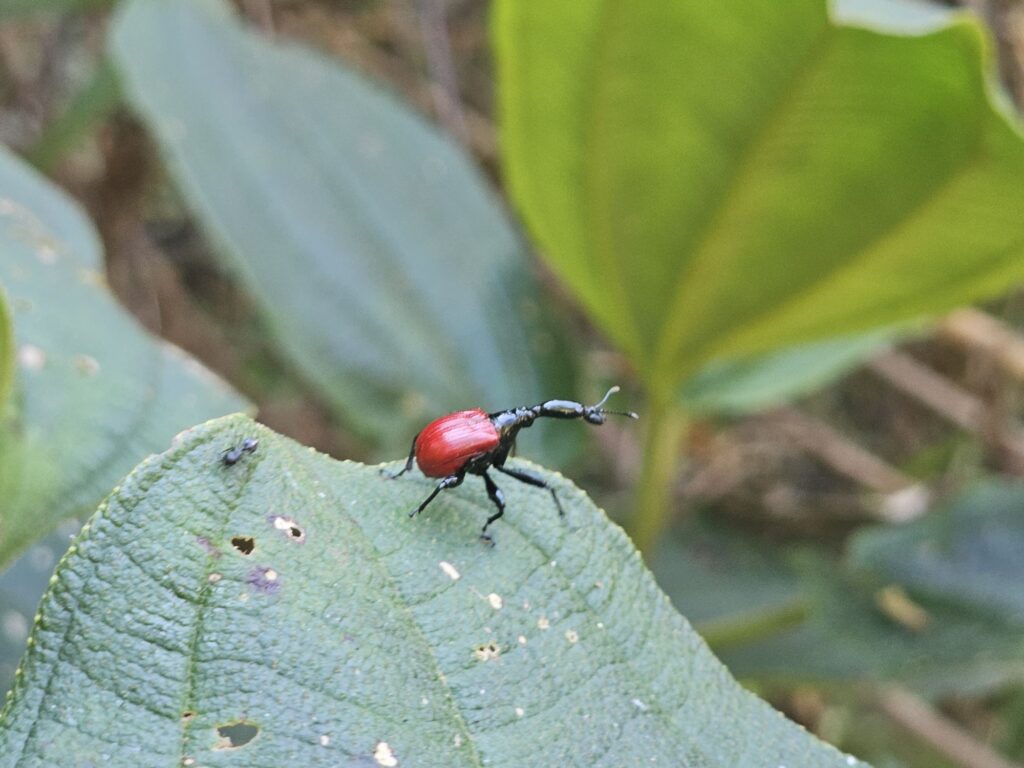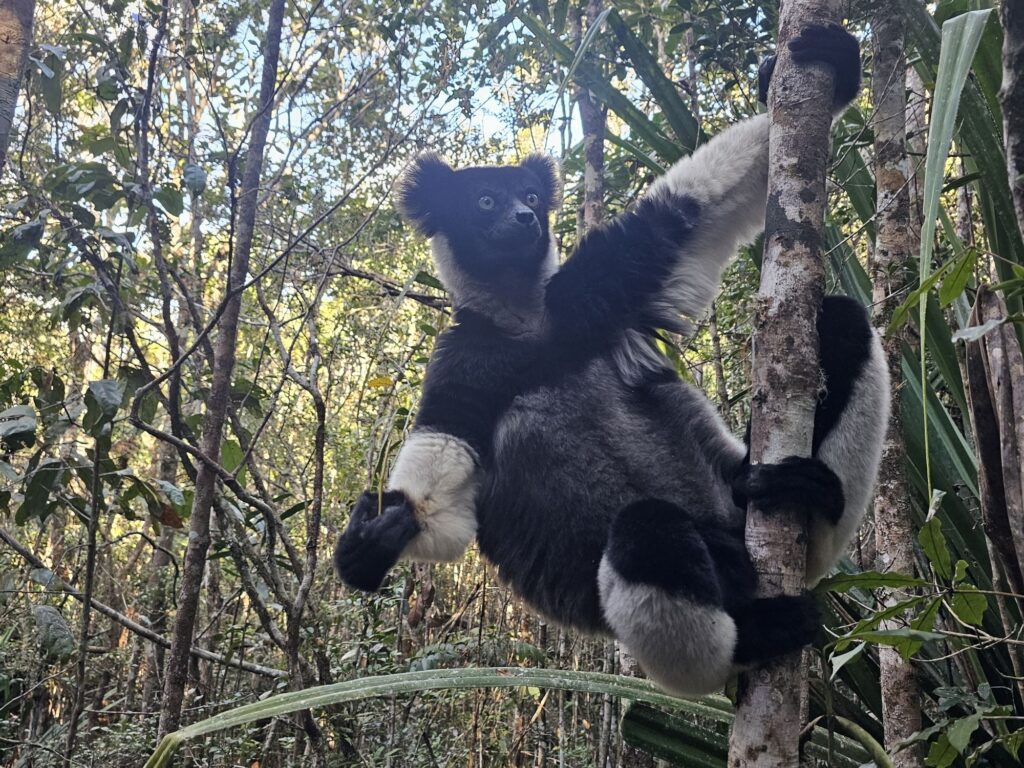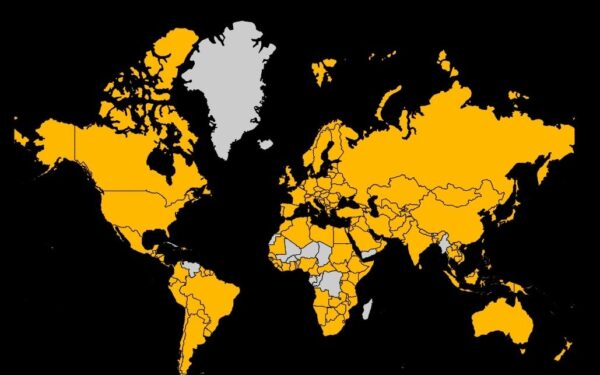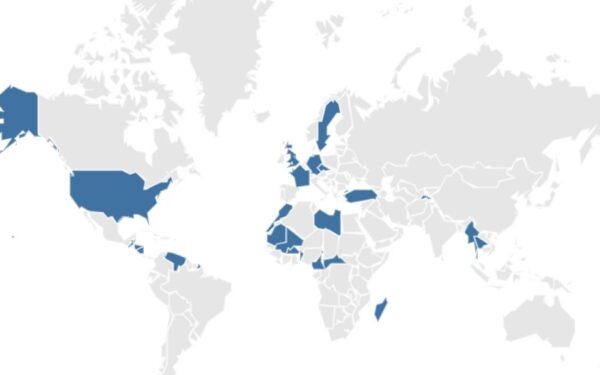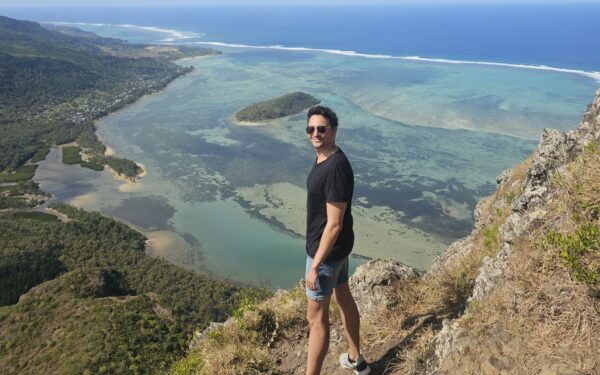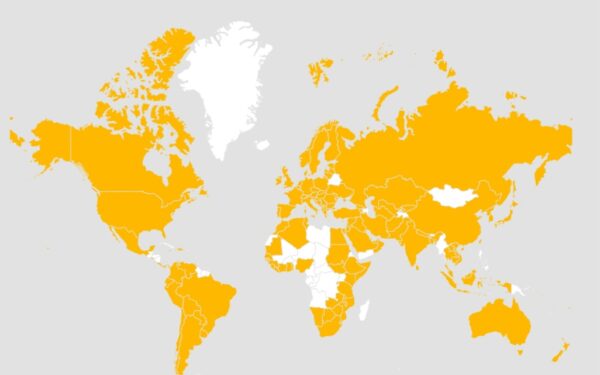Trip Report: Madagascar
Visited in August 2024
Madagascar is a country I have been looking forward to visiting for years. In fact, I’ve had the Madagascar Lonely Planet guide book lying around for eight or nine years without ever making it there. I did plan a trip to the country from time to time, but eventually decided on another destination.
Finally, in August 2024, the time had come. Madagascar became my 174th country and my 47th in Africa. I spent almost two weeks there with Kati, which was the longest time I had spent in one country since Australia in 2022. However, I knew a trip to Madagascar requires some time and I would take it. Even with this amount of time, you had to prioritize which places you would visit in the country. There wasn’t enough time for everything.
Why was I so fascinated by Madagascar? First of all, the fact that Madagascar, the fourth largest island in the world, is sometimes referred to as the eighth continent due to its unique flora and fauna. Once you’ve visited a certain number of countries, some of the new ones don’t offer much that you haven’t seen elsewhere. I knew that wouldn’t be the case with a country called “the eighth continent”.
Second, the feedback from people who had been to Madagascar was always positive. I’ve only heard good things about the nature, the food and the culture. Only the roads have the reputation of being bad. But someone with my travel experience should be able to handle that, right?
For the itinerary, we chose the classic RN7 trip. RN stands for route nationale, the highways of Madagascar, if you will. The RN7 runs from Tuléar in the south to the capital Antananarivo, with several national parks along the way. As one way takes about two days of driving, we took a domestic flight from Tana, as Madagascar’s capital is colloquially known, to Tuléar and drove all the way back to the capital afterwards.
In total, we spent about 30-33 hours on the road. The times shown on Google were accurate in most cases, but not always. On some bad roads, e.g. when driving from the RN7 to Tsarasoa, our lodge in the Tsaranoro Valley, the journey was extended by an hour each way.
Some of you who are a little familiar with Madagascar are probably thinking that the most important thing is missing. When I planned this trip, Baobab Avenue was also part of the itinerary. In the west of the country, near Morondava, there is a road where several baobabs are lined up side by side. It looks surreal and is probably the most photographed place in the country.
However, I soon had to abandon this idea because during the two weeks we were in Madagascar, all flights from Antananarivo to Morondava were fully booked. August is the absolute peak season for Madagascar, and even when I booked in May, none of the flights were available, although there are three per week.
Instead of flying we could have driven there, but that would have added about 15 hours to our already very long trip. Was this Baobab Avenue worth it? With a heavy heart, I answered this question with no. Instead, I added Andasibe, another national park three hours east of Antananarivo, to the itinerary.
I was full of anticipation as we set out. Before Madagascar, we spent three days in Mauritius. Those three days were okay, but fell a little short of expectations. Now the highlight of the trip, Madagascar, was to follow. Little did I know that we were in for one of the toughest trips in recent memory…
Things got off to a bad start. If you want to rent a car in Madagascar, you have to hire a driver. Self-driving is not allowed. I wrote to several drivers whose contacts I found online. A gentleman named Faly, who was recommended by another traveler, made me a good offer. He wanted €60 for a 4×4 car per day including his services but excluding fuel. Other offers I had received were sometimes more than twice as expensive. However, €60-70 for car and driver without gas seems to be a normal price that I wanted to stick to.
The plan was for Faly to drive from Tana to Tuléar two days before our arrival. I paid him for the extra two days, including gas for the trip. Upon our arrival, we would fly from Tana to Tuléar, where Faly would pick us up at the airport and then drive us up the RN7.
Unfortunately, the day before we arrived, Faly texted me that there was a problem. He said that his car had broken down in the middle of the way. He needed a spare part from Tana and couldn’t continue for the time being, since it would take a day for the spare part to arrive. However, he had hired a friend to wait for us and then head north. Was this story true? I have absolutely no idea.
There was a young man waiting for us at the airport in Tuléar, but his English was poor. Communicating with him was therefore difficult and we had several misunderstandings the next days. The first occured right upon arrival. He took us to the city center of Tuléar, thinking we wanted to have breakfast there, which was not the case. On the contrary, this detour increased our travel time from 5 hours to 5.5 hours that day, which we would have liked to avoid.
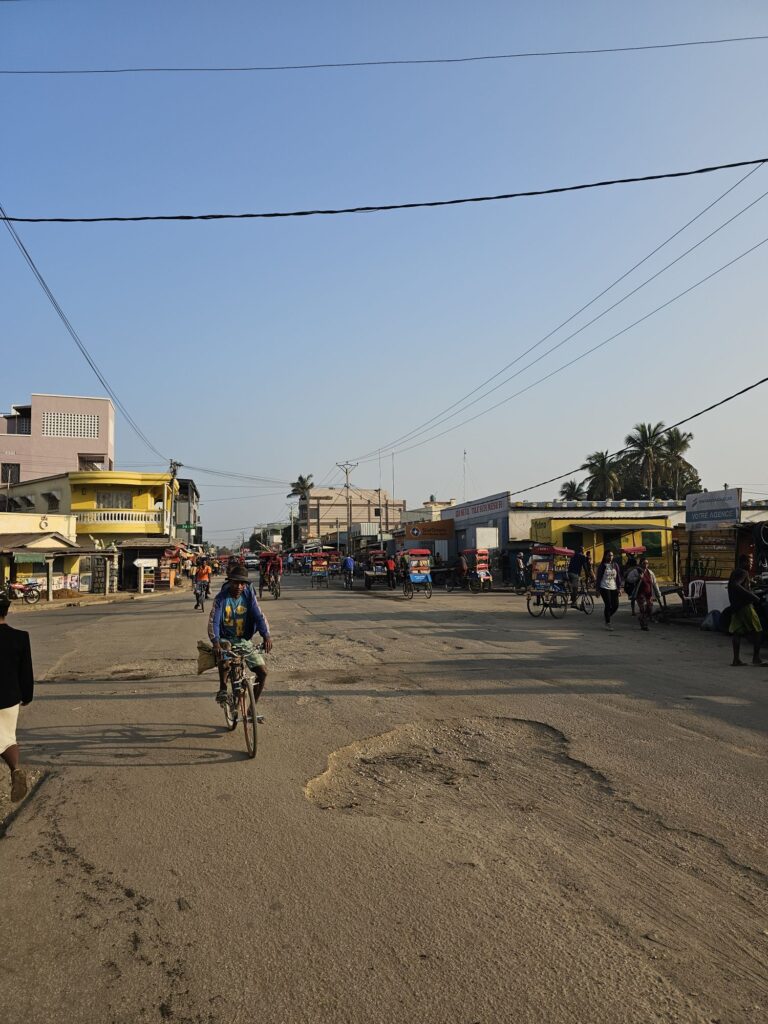
In Tuléar we got some cash from an ATM. If you’re traveling up the RN7, there aren’t that many ATMs on the way. As credit cards are accepted in very few places, you should make sure that you always have enough cash with you. Many ATMs also have a withdrawal limit of 200,000 ariary, which is a ridiculous €40. They also charge a fee of 10,000 ariary. It is therefore best to withdraw a million or more whenever the ATM offers the opportunity to do so.
After that, our road trip started. Basically, you could characterize our whole trip as having a driving day where we spent 4-7 hours in the car and after that a day in the park. That’s how traveling in Madagascar works: one day driving, one day having fun.
On the driving days, however, there was often something to do in between. On our first day of driving, for example, we stopped at Zombitse National Park, where we saw our first lemurs, probably Madagascar’s most famous animal. In hindsight, it was perhaps the least interesting park, but I would still recommend making a stop as it is just off the main road.
Unfortunately, this was also where the first disaster occurred. When we got out of the car, we pulled the whole door off the car when we opened it. It took about three-quarters of an hour to put it back on. But it was already clear that the car was crap. It was not the car Faly had promised us.
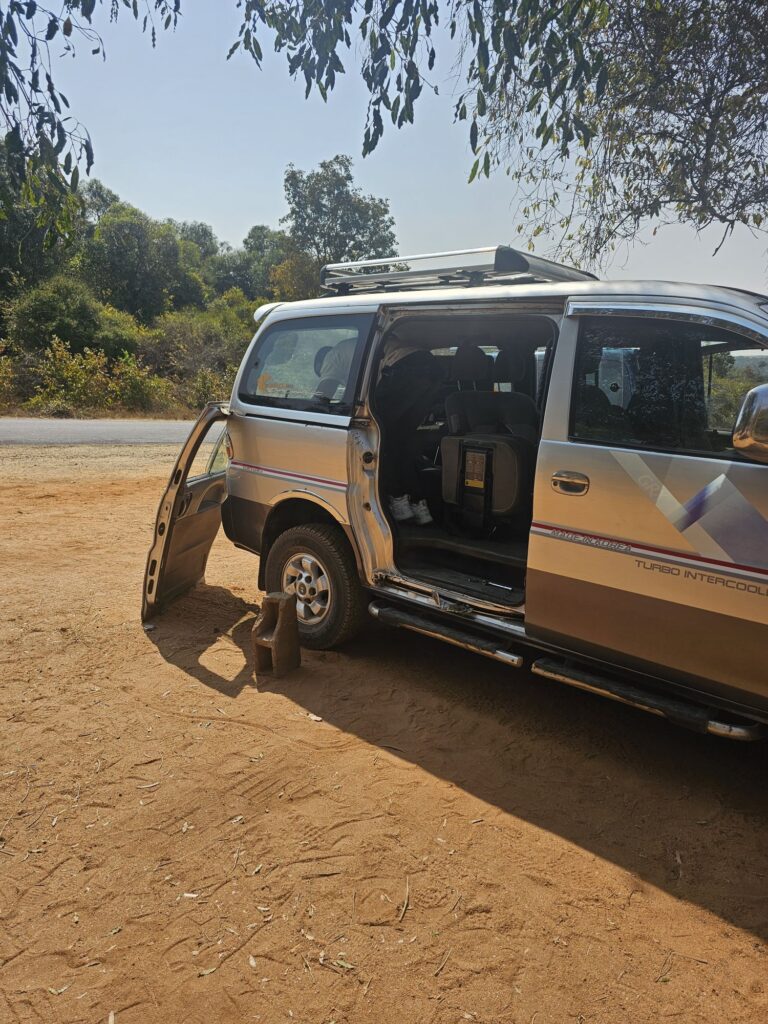
By the way, the RN7 between Tuléar and Isalo was in a terrible condition, one of the worst I have ever seen. I knew that Madagascar has bad roads. However, I thought that the RN7 would be in a reasonably acceptable condition, which was definitely not the case. One pothole, or more accurately one crater, followed the other. Believe it or not, our driver said that this was the second best road of the entire country.
What was even more striking in the south of Madagascar was the poverty. I have rarely seen people living in such basic conditions. The houses we saw there were made of mud and the roofs of large leaves. At the same time, there were an incredible number of beggars. Mostly children. And they were begging for water. In the south of Madagascar, most people don’t have running water, You have to imagine that. Although I have seen a lot of misery in Africa, this region was hard for me to bear. And even less for Kati.
We arrived at Isalo National Park in the early afternoon and spent the rest of the day at the Isalo Rock Lodge, a somewhat outdated luxury lodge. It seemed strange to come from such poverty and end up in this lodge. But that’s where the second disaster struck…
First, let me tell you that most of the activities in Isalo National Park focus on hiking. There are various hiking trails, from short ones that only take two to three hours to full-day hikes. We opted for a half-day hike of four to five hours the next morning. Isalo National Park is a stunning landscape of sandstone formations, deep canyons, and rare endemic flora. There are plenty of viewpoints where you can marvel at the scenery.
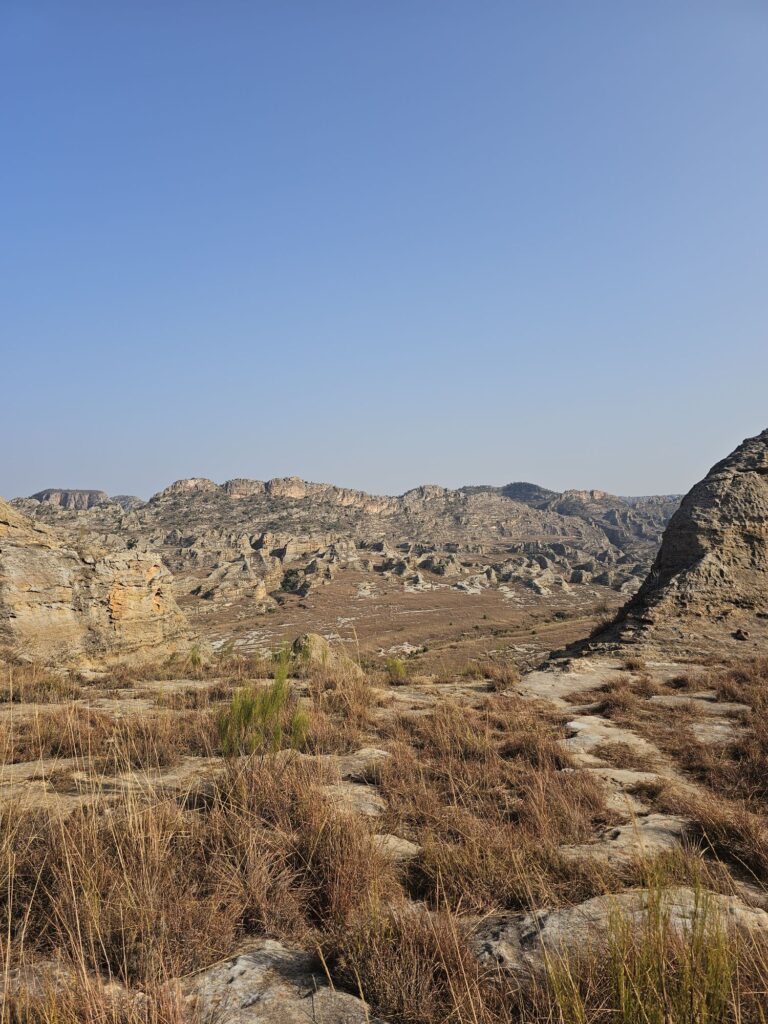
Of course there is wildlife too, but in this park it is more about hiking and the rocky landscapes. Nevertheless we saw some animals, mainly insects, reptiles and birds. Only at the very end did we see the ring-tailed lemurs.
So, what was the disaster that I mentioned? In the very beginning of the hike I realized that something was wrong with me. I felt weak, slightly feverish and a little nauseous. We started the hike anyway, and the longer it went on, the worse I felt. At one point I couldn’t walk any further and had to throw up. An hour later, I threw up a second time.
I finished the hike and the last hour or two without food or water in my body was agony. Back at the hotel, I went to bed and slept through the afternoon with a body temperature above 38°C. I had food poisoning. For the second time in three months, after having suffered the same fate in Tajikistan in May!
Where did the food poisoning come from? Hard to say, but most likely from the lodge, since I had only eaten there the day before. In any case, this food poisoning knocked me out for two days. There was no other activity in Isalo National Park for me, and I missed the sunset at the Isalo Window.
Our next stop was the Tsaranoro Valley, where we planned to hike for the next two days. Due to my condition, I didn’t manage to eat anything for two days. I didn’t think I would be able to hike, but I gritted my teeth and made it up Chameleon Rock the next day, which was a 5-6 hour hike.
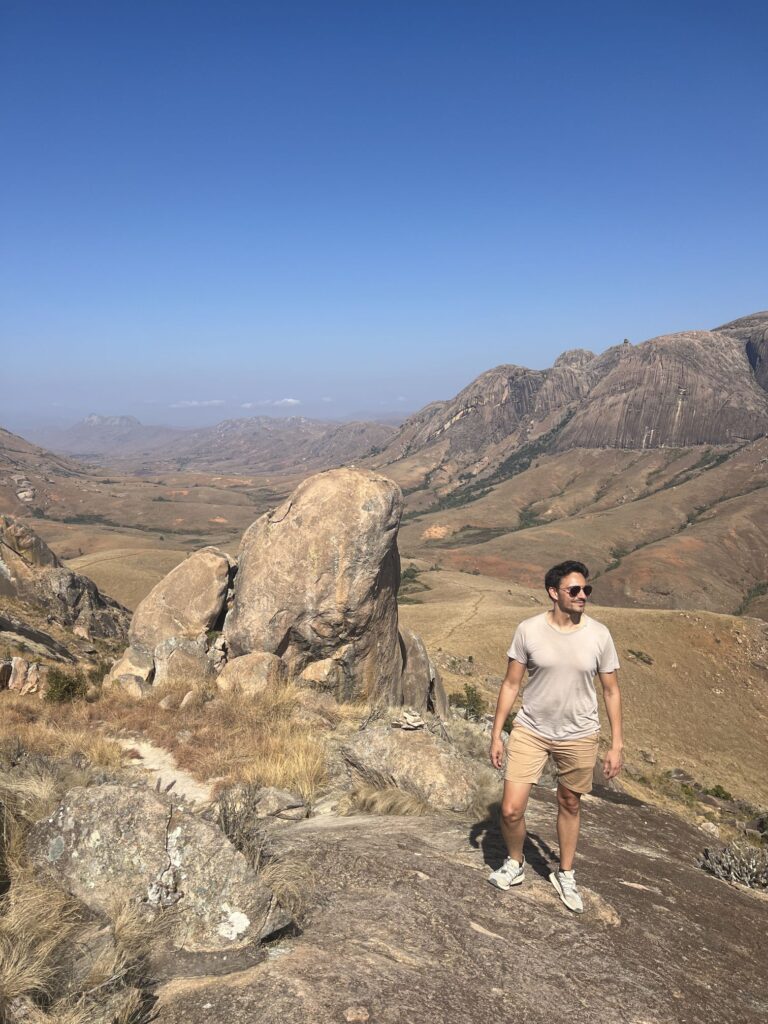
However, I could feel that my energy level was low. As a result, I crawled up the 600m climb like a snail. But the view at the top was worth it. The Tsaranoro Valley, located at the gates of Andringitra National Park, offers the same landscapes as the national park, but there is no entrance fee.
But you still need a guide. That’s a thing in Madagascar. You are not allowed to do activities in parks, whether national parks or community reserves, alone. You need a guide. Of course it’s a job creation, but in a poor country like Madagascar I think it’s a good thing. Besides, when it comes to finding animals, you would be lost without a guide anyway. Spotting chameleons or insects in the bushes is practically impossible for the untrained eye.
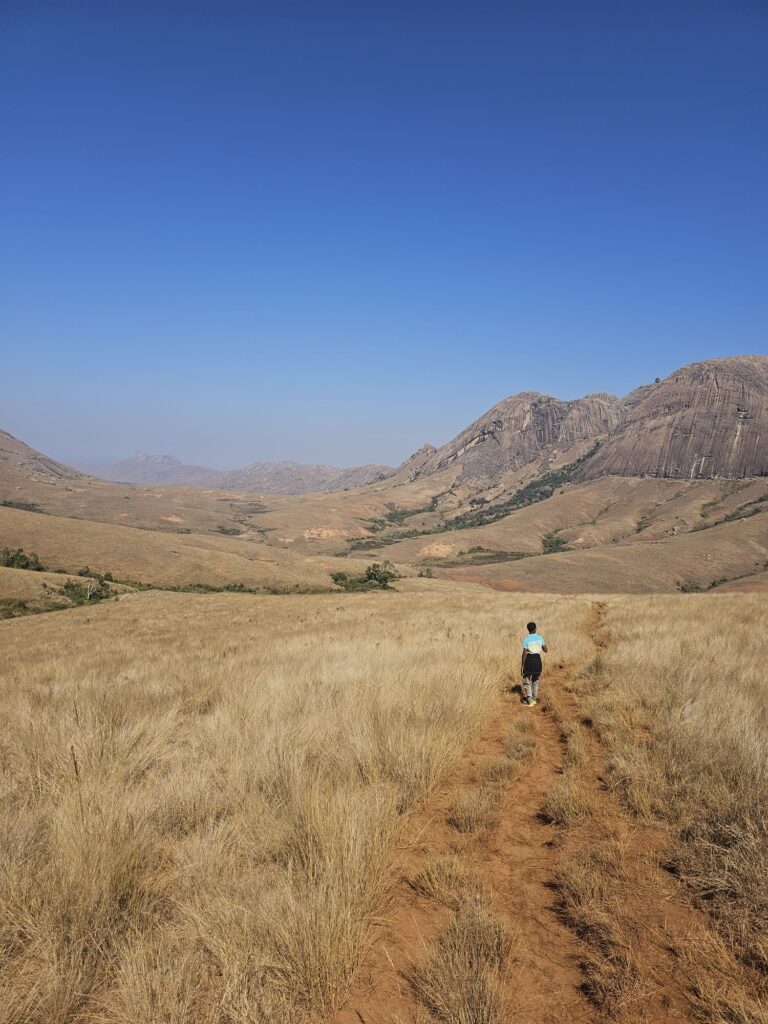
Luckily, after two nights in the Tsaranoro Valley, I was almost back to 100%. The only thing that made me sick was the thought of meat (I probably got food poisoning from a pork steak). Needless to say, My appetite was not the same as before, even days later.
Our next destination was the Ranomafana National Park. The drive there was one of the more enjoyable, as there were two exciting stops. First, we stopped at the Anja Community Reserve, a beautiful private park, and in Fianarantsoa, the second largest city in Madagascar. This made the long day’s drive a little shorter and more entertaining.
At the Anja Community Reserve we saw lemurs and lots of chameleons. For me, Madagascar was a country where I would see many animals I had never seen before. In addition to lemurs, these included chameleons, but also other reptiles and beetles. Especially after countless Big Five safaris in Africa, it was cool to see something new.
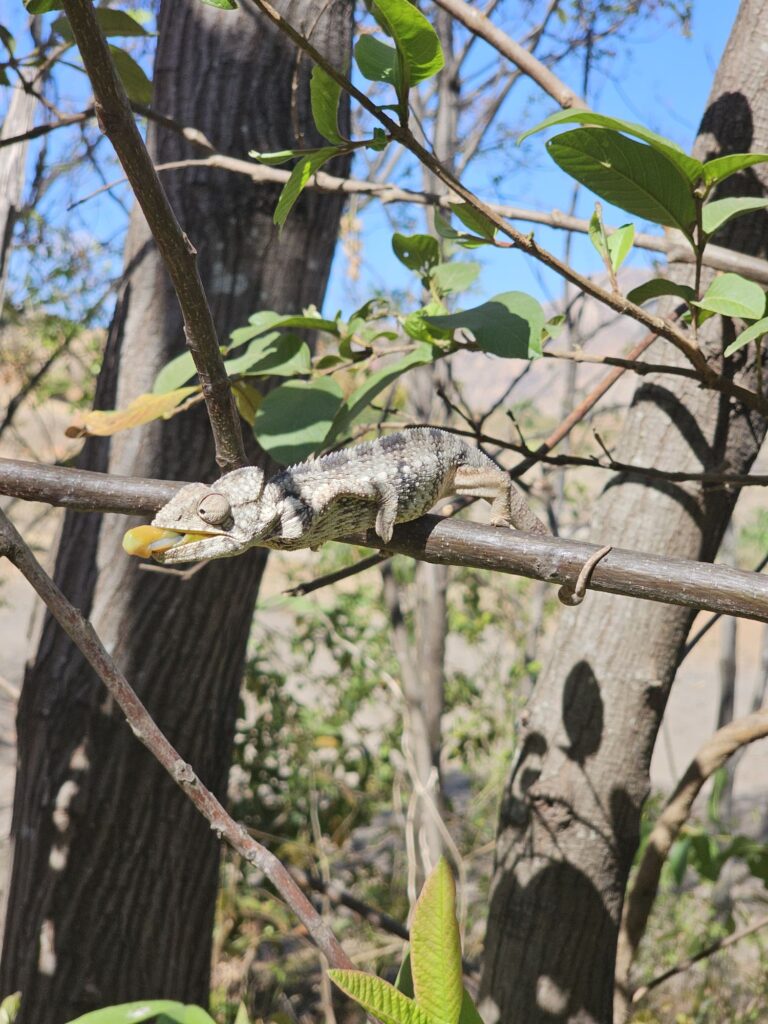
5% of the world’s biodiversity is found in Madagascar and only in Madagascar. 95% of the reptiles are endemic, as well as 89% of the plants and 92% of the mammals. You cannot find them outside Madagascar. Since 1999, more than 600 new species have been discovered in the country, including 41 mammals and 61 reptiles.
By the way, our car “lost” the door for the second time in Fianarantsoa, whereupon I complained to Faly. I had the feeling that he had lied to us and had never left Antananarivo. However, it was difficult or impossible to prove this.
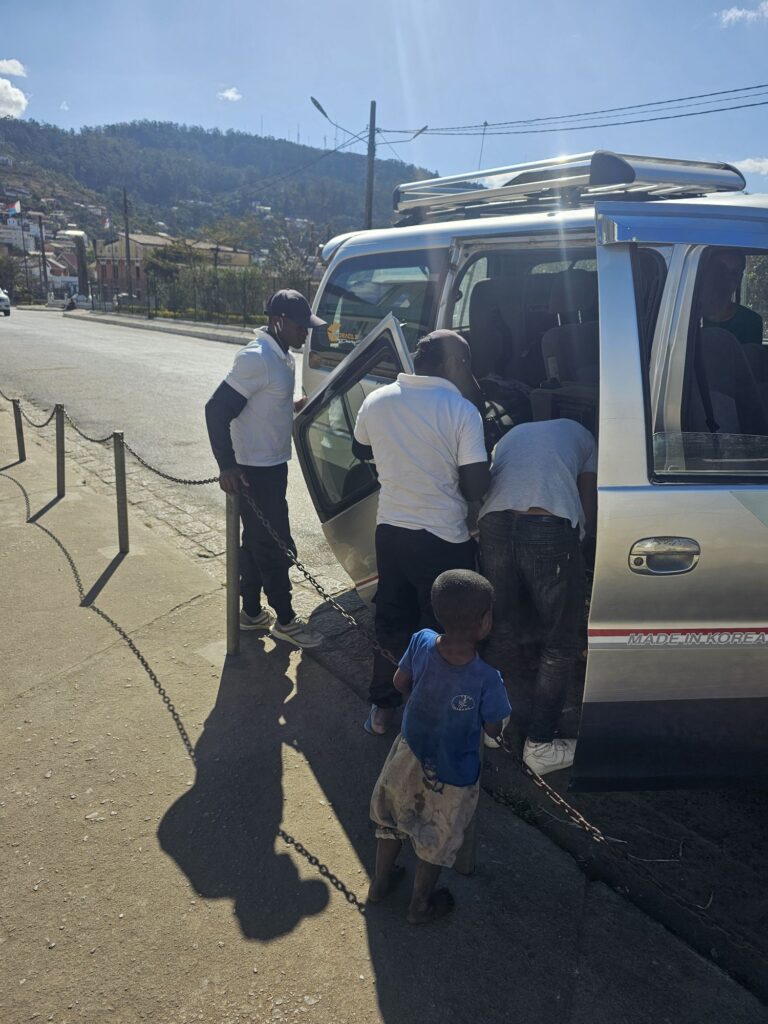
In the meantime, I also found the begging of the locals, which you could see almost every day somewhere, a burden. I have rarely experienced countries where people begged like this. The beggars were extremely pushy and wouldn’t take no for an answer. It was very annoying.
When we arrived in Ranomafana, Kati was not feeling well. She had diarrhea and stomach cramps that got worse and worse. Another case of food poisoning. That’s what we thought at first. We didn’t know that at the time, but it turned out to be the end of the trip for Kati…
She thought she would take a break for a day or two and feel well again after. So the next day I went alone to the national park, where seven different species of diurnal (meaning day-active, the opposite of nocturnal) lemurs live, and I saw all of them. I also saw two small snakes, something you don’t get to do every day.
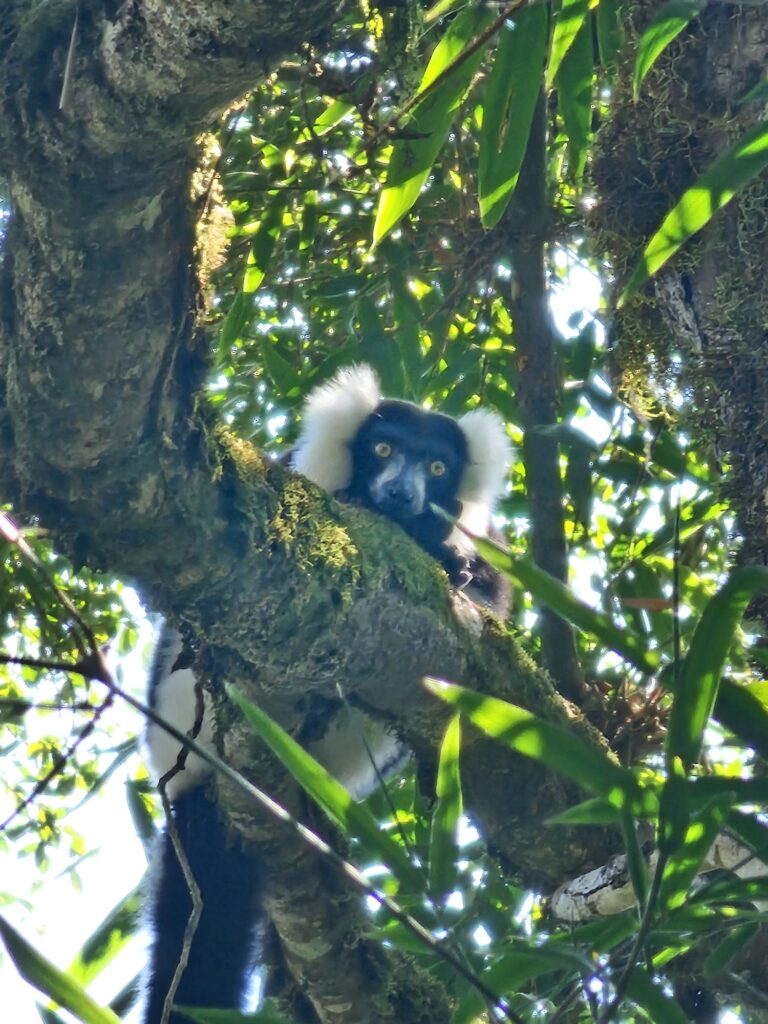
Looking back, Ranomafana was the park I saw the most of in Madagascar. Being a rainforest, it was perhaps not as spectacular as Isalo National Park in terms of nature, but in terms of wildlife it was a 10/10. Of course, a bit of luck is also involved. According to my guide, you can expect to see about three species of lemur during a visit.
Kati had a fever of over 40°C on my return, which was accompanied by enormous stomach pains. In fact, she didn’t eat or drink for almost two days, because the pain was almost unbearable when she had to go to the toilet. It was very worrying. Staying in Ranomafana, which was in the middle of nowhere, was no option either. We had to continue to the next big city, Antsirabe.
The next day we had to drive eight hours on the worst roads. The trip was hell for her. I also hated the trip on this bumpy road, especially because Google had shown me a journey time of less than six hours and after an hour I found out that the road quality of Google’s suggested route was so bad that we had to take a two-hour detour.
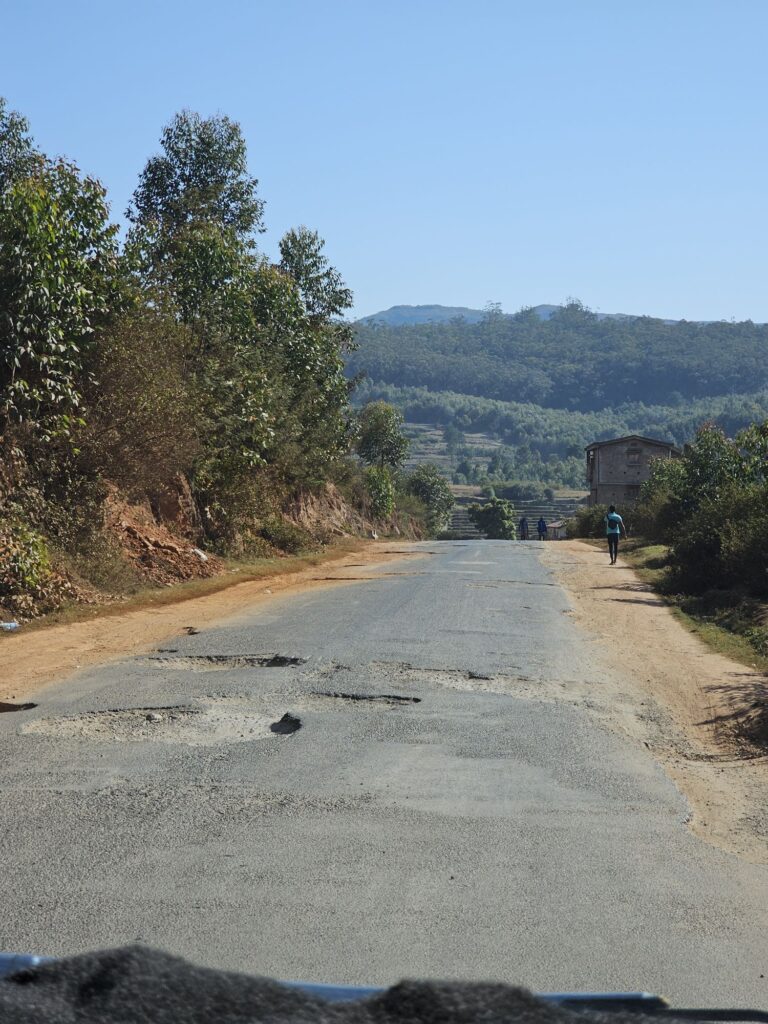
In Antsirabe, we found a doctor who diagnosed Kati with dysentery. I had never heard of this disease. It is a bacterial infection that attacks the large intestine. Again, it is difficult to understand where she contracted it. It must have been from contaminated food or drinking water. Probably at Tsarasoa Lodge in the Tsaranoro Valley, the worst accommodation we had on this trip with sometimes food of questionable quality they gave us for dinner.
By the way, most of the accommodations in Madagascar were average to okay. The tourism infrastructure is not comparable to e.g. Namibia, where one beautiful lodge follows the other. There are also luxurious lodges in Madagascar, but not in abundance. In most places, our hotels were pretty basic. At least, they were all cheap.
What kind of tourists did we see in the country? Virtually all Europeans, mostly from Italy, Spain, France and Germany. They tended to be a clientele that in a few cases was our age, but in most cases 10 to 20 years older. The country certainly had tourists, the accommodations were always full, but the country never seemed crowded.
We rebooked the last few nights so that Kati could stay in the Radisson Blu in Antananarivo for three days. As soon as we got to Tana, she started to feel a little better, probably due to the six different medications, including antibiotics, that the doctor prescribed.
However, she didn’t feel like going on another trip, so I did the last part of the journey, Andasibe, on my own again. By this time, I was already extremely tired of Madagascar. The four parks I had already seen, as well as the Tsaranoro Valley, were all cool places. However, the price you had to pay to see these places was high.
It required hours of driving on very bad roads where you could see a lot of suffering and misery. In addition, there were tropical stomach diseases, beggars everywhere, and intense heat during the day and low temperatures at night. Although Madagascar has a very long coastline, 70% of the country is at an altitude of over 1000 meters. This means that it cools down quickly after sunset.
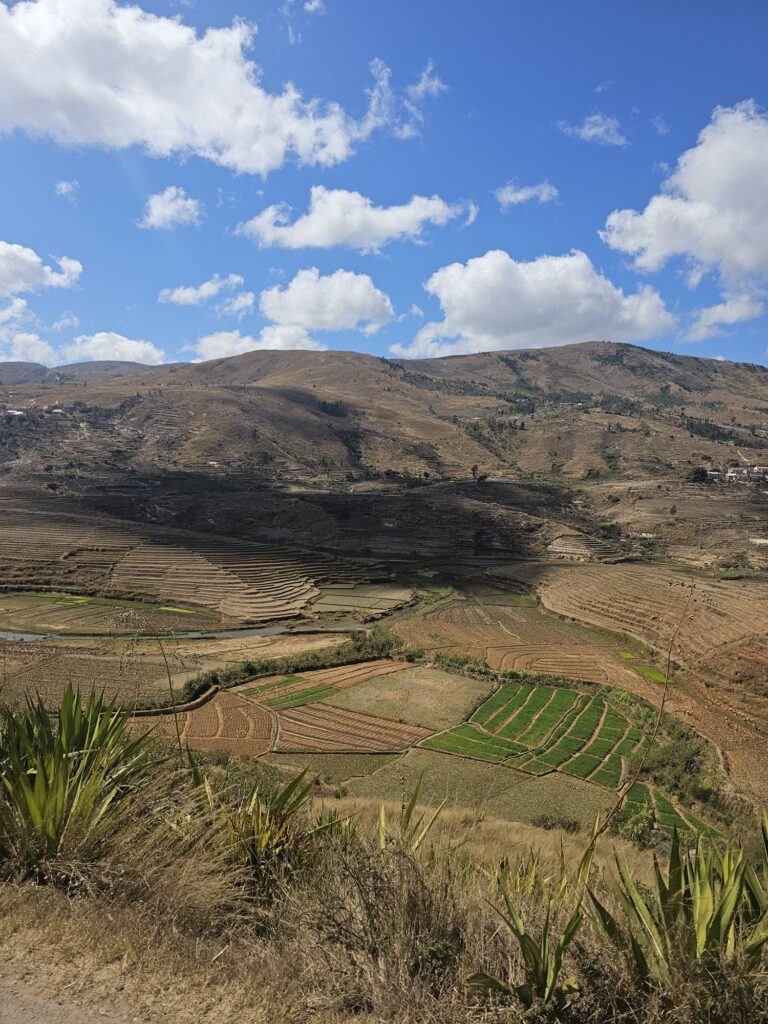
Andasibe was a worthy end to the journey. The drive from Tana to Andasibe was supposed to take 3 hours, but at some point we were stuck in a traffic jam for an hour. The driver said it would probably take another 4 hours to finish the last 30km. At that moment I hated Madagascar. It felt like proper West Africa instead of “the eighth continent”.
Luckily, it was only another two hours before we arrived at the hotel. The Mantadia Lodge was my best accommodation in Madagascar. In most cases, only the price of the accommodation in Madagascar was excellent, but here everything was top notch.
In the afternoon I went for a hike in the Andasibe National Park. Although I have to clarify. I wasn’t in the national park, but in the Mitsinjo Community Reserve next door. It’s basically the same park, separated by a paved road. The state takes care of one side, the community of the other.
The guide recommended that I go to the community reserve because it’s easier to see animals there in the afternoon. And I couldn’t complain. I saw two new lemur species in the park, including the indri, the largest lemur species.
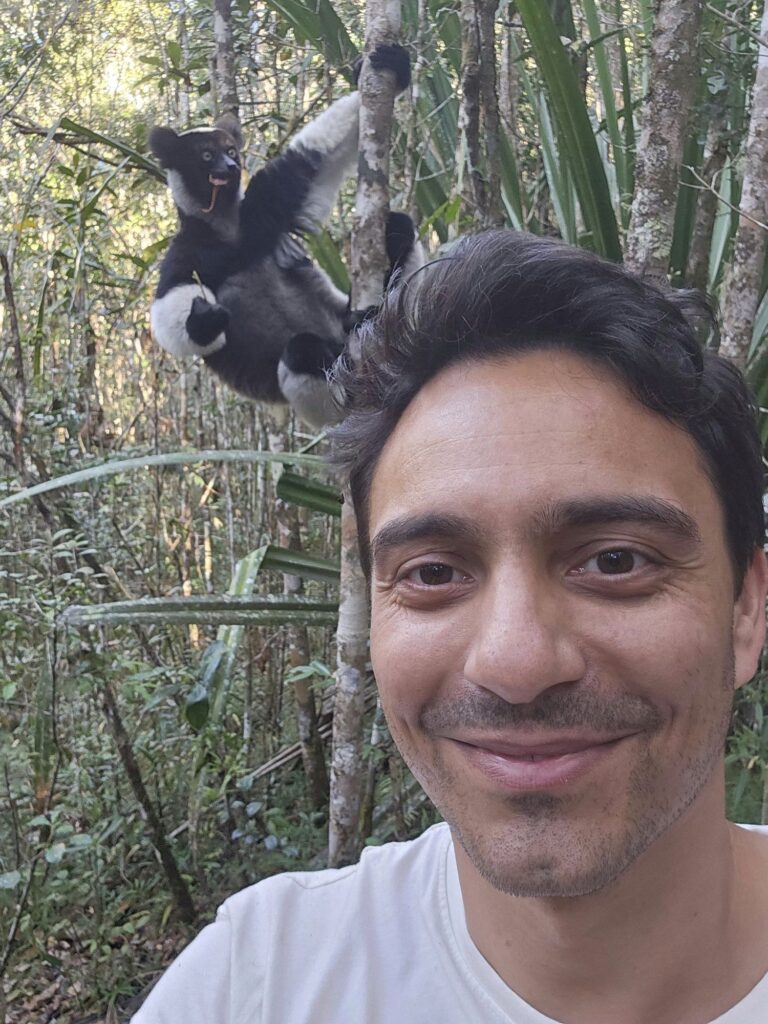
I could have done a morning tour in Andasibe National Park the next morning, but I didn’t want to leave Kati alone for so long. Besides, after six parks I’d had enough. I saw twelve lemur species and dozens of other animals in Madagascar, which is a pretty good record, I would say.
When I returned to Tana, Kati was feeling reasonably well again. The antibiotics had obviously worked. Still, she missed the last six days in the country. She also didn’t want to do the last activity, a free city tour in Madagascar that Faly had offered us for all the trouble. She was already done with Madagascar.
So on the last day, I spent a few hours alone with Faly to see Antananarivo. It is a typical African capital with all the hustle and bustle that goes with it. You can see the sights of the city in two to three hours. Faly, whom we hadn’t met before this last day, turned out to be a nice guy and I have a feeling that the trip would have gone much better if he had been there instead of our driver.
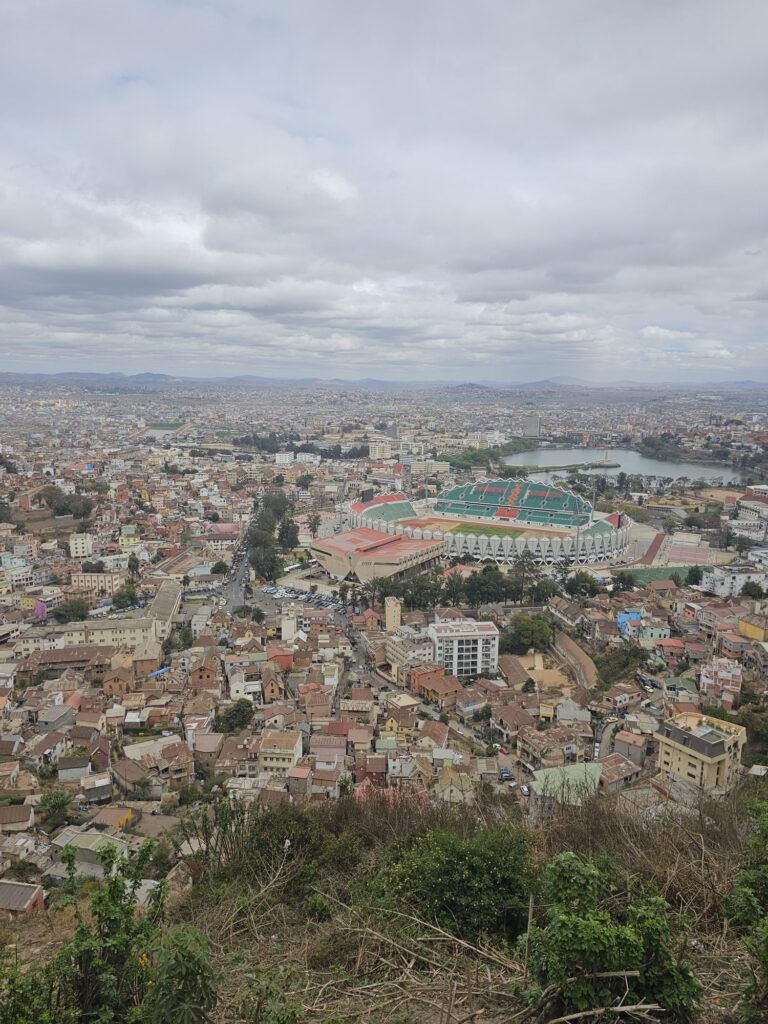
We left Madagascar that same afternoon. And to be honest, we were both glad to leave. This trip turned out to be extremely exhausting, much more exhausting than expected. I have to admit that the sights and activities in Madagascar are cool. No question about that. But the effort you have to put in is also very high. In retrospect, I thought this RN7 trip was too long, simply because the distance you travel by car is gigantic.
If someone asked me for an itinerary, my first question would be: how often do you want to see lemurs? Do you want to go to six or seven different places and are not afraid of long drives on terrible roads? Then do the same route we did.
If 1-2 times is enough for you, then spend a few days in Tana and visit the lemur parks nearby. You can visit some of them as a day trip from the capital. And you can go to Andasibe with an overnight stay and do both an afternoon and a morning tour.
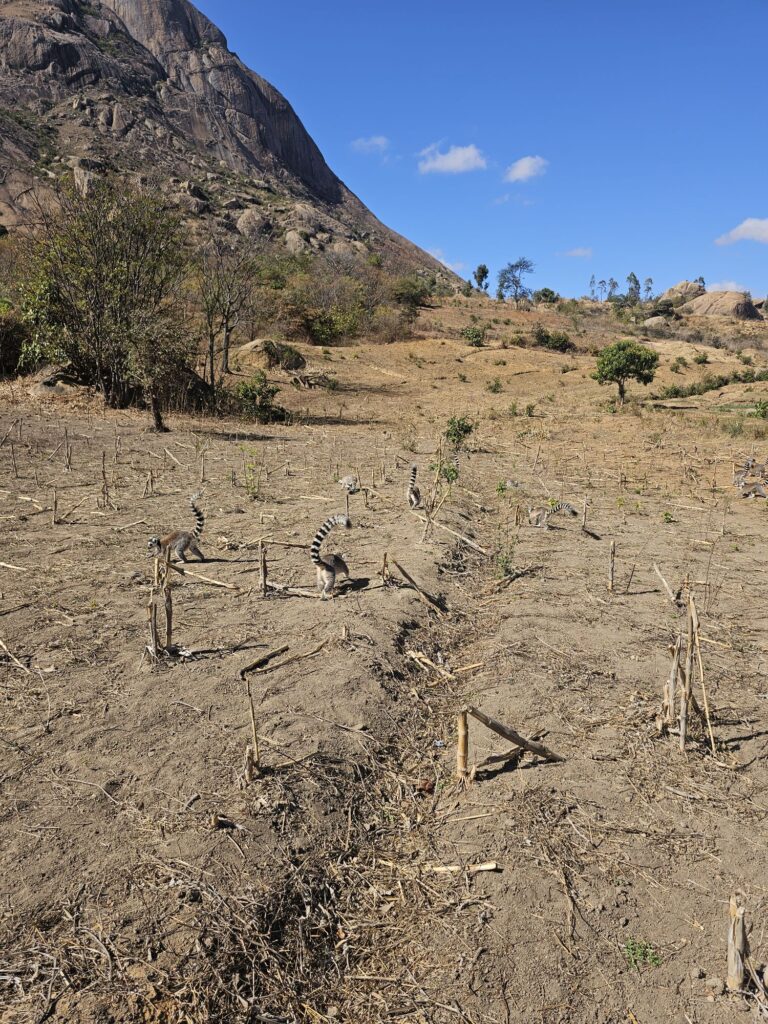
In addition to a few days of lemurs around Tana, you could fly north for another three days to see either the beautiful beaches of Nosy Be or another island. Or you could fly to Morondava to visit the Baobab Avenue and possibly continue on to Tsingy National Park. All of these would be shorter itineraries than ours.
It’s not easy to pick a highlight from the places we visited. Isalo National Park and Tsaranoro Valley are mainly about beautiful nature and less about wildlife. Ranomafana and Andasibe are rainforests, but I saw the most animals there.
Anja Community Reserve and Zombitse NP were good stops to break up the long drive with an activity. I didn’t find the towns of Fianarantsoa and Antsirabe very exciting, but there are more restaurants and supermarkets there, which are hard to find in the small villages around the national parks.
When I was finalizing our itinerary, I thought that after this trip, there would still be enough places in Madagascar for another two-week trip. I gave up on that idea for now. I’m not saying I’ll never go back, but it’ll probably be a few years before I go back to Madagascar again.
So, the bottom line is that Madagascar is an adventure destination that takes a certain toll on travelers. The country is like no other and it has given us beautiful images, be it the nature on the trips or the wildlife in the national park. But it also took a lot out of us physically and mentally. Certainly one of the most strenuous countries I have visited on my road to 197.
Click here to find the trip reports of the 180+ other countries I have visited so far!
